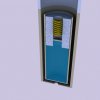Nomex and kevlar are both variations of heat resistant aromatic polyamide fibers, which is the thing that ludo said are in janty's atomizers so probably all the other ones as well. There hasn't been any kind of testing of this material in the application we are using it for. I found some data sheets from DOW chemical on these materials and they said:
" BURNING NOMEX & KEVLAR PRODUCE HAZARDOUS GASES SIMILAR
TO THOSE FROM WOOL; MOSTLY CARBON MONOXIDE, CARBON DIOXIDE, NITROGEN OXIDES
& SMALL AMOU NTS OF HYDROGEN CYANIDE, AMMONIA, ALDEHYDES, ALIPHTIC
HYDROCARBONS & OTHER TOXIC GASES DEPENDING ON BURN CONDITIONS."
So who knows how dangerous inhaling this stuff is in small amounts while the atomizer we are puffing on is gradually degrading. It'd be nice if a manufacturer would address this, but none will, as having a potentially harmful substance at the center of the thing they're selling as safe is not good for buisness.
" BURNING NOMEX & KEVLAR PRODUCE HAZARDOUS GASES SIMILAR
TO THOSE FROM WOOL; MOSTLY CARBON MONOXIDE, CARBON DIOXIDE, NITROGEN OXIDES
& SMALL AMOU NTS OF HYDROGEN CYANIDE, AMMONIA, ALDEHYDES, ALIPHTIC
HYDROCARBONS & OTHER TOXIC GASES DEPENDING ON BURN CONDITIONS."
So who knows how dangerous inhaling this stuff is in small amounts while the atomizer we are puffing on is gradually degrading. It'd be nice if a manufacturer would address this, but none will, as having a potentially harmful substance at the center of the thing they're selling as safe is not good for buisness.




